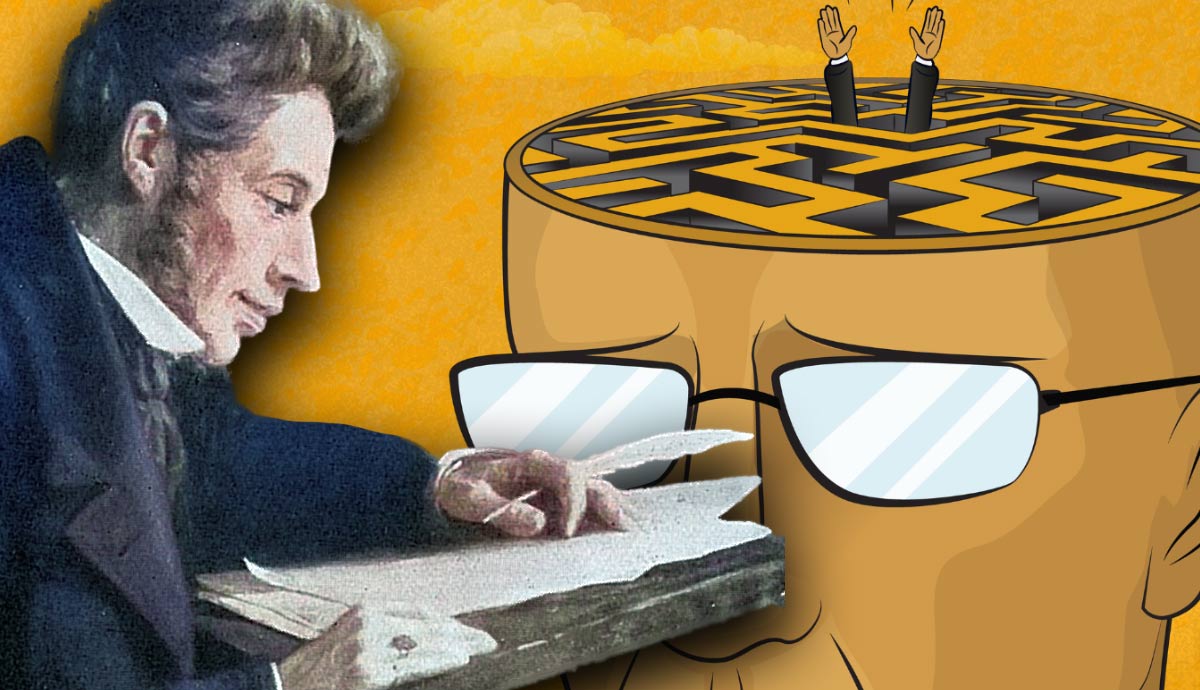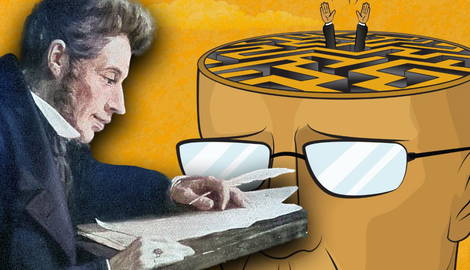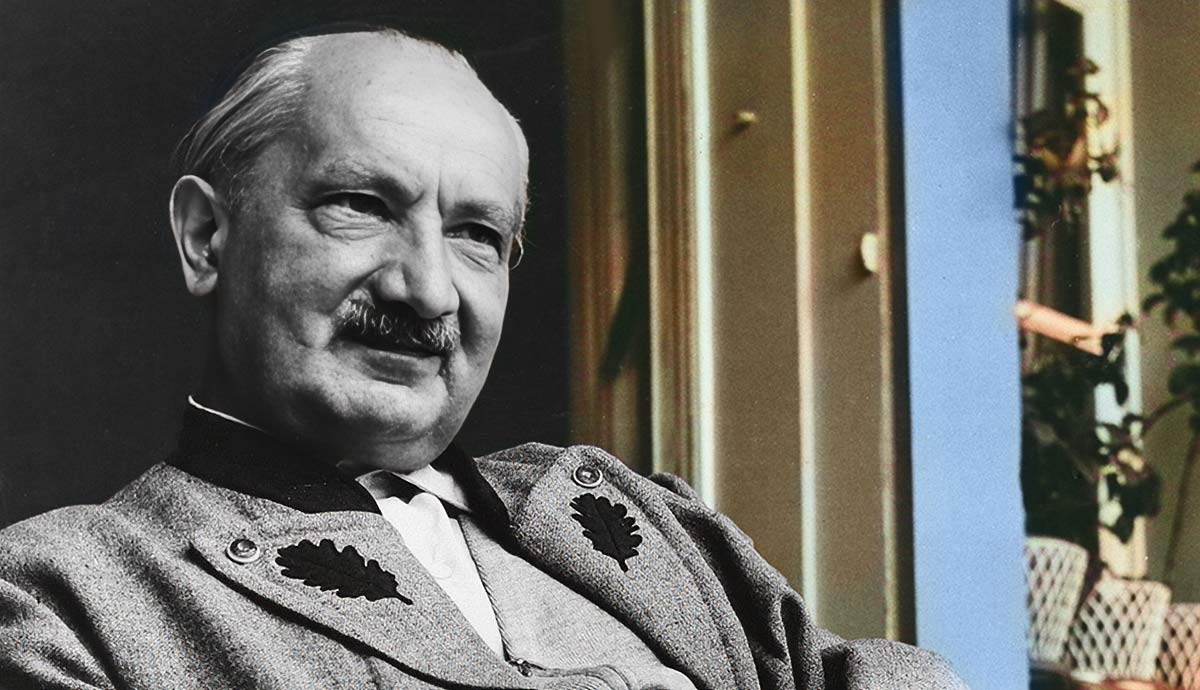
The Concept of Anxiety (1844) and The Sickness Unto Death (1849) are considered part of the psychological work of Danish philosopher Søren Kierkegaard. For him, psychology is related to the science of man as an emerging self-conscious spirit. In these two books, one finds central concepts such as anxiety and despair. Every authentic human being faces anxiety, the weight of freedom, and the possible. One of the ways we find ourselves immersed in despair is by not confronting this anxiety.
Søren Kierkegaard’s Philosophical Figure

Is difficult to grasp Kierkegaard’s ideas without saying something, though tremendously brief, about his own life. Born in 1813 in Copenhagen, Denmark, Kierkegaard was from the start deeply influenced by the religious devotion of his father. At some point, he even completed a pastoral seminary to become a priest and he eventually preached in Copenhagen churches. However, he was never ordained. In fact, his young adult years were taken up with disagreeable hedonistic behaviors. Kierkegaard remains a religious writer and concepts such as anxiety and despair have religious connotations.
Kierkegaard was a melancholic figure. He deemed, as his father claimed, that the family was under the curse of God and that their lives were stained by a “Death Shadow.” Kierkegaard had reasons to believe this curse: five of his brothers died as well as his mother. For this, Kierkegaard judged that he would not live to be thirty-four (Reale & Antiseri, 2008, p. 356). Although economically wealthy, entries in his journal are testimony of his inner isolation and lack of direction, an overwhelming melancholy. One entry reads “I just now come from a party where I was its life and soul (…) everyone laughed and admired me, but I went away (…) and wanted to shoot myself” (Hannay, 1993, p. 4).

Another key event in his biography is his engagement to Regine Olsen in 1840, who was 18 years old by then. However, the engagement was shortly terminated. According to Kierkegaard, someone who embraces the ideal of the Christian life cannot live as a calm man while being married; moreover, he recognized that he could not be a husband and a father given his melancholy and spectral ways (Lippitt & Evans, 2023). The years after the failed engagement were very productive for Kierkegaard: Either/Or (1843), Repetition, Fear and Trembling (1843), and The Concept of Anxiety (1844) are some of the books that represent this phase.
Kierkegaard’s Pseudonyms

Kierkegaard wrote under a variety of pseudonyms in addition to his name. Some of the Pseudonyms he used are Victor Emerita, Johannes de Silentio, Vigilius Haufniensis, and Anti-Climacus among many others. Kierkegaard was also keen in insisting that one should quote the pseudonyms. Therefore, many modern scholars use the pseudonyms when discussing Kierkegaard’s oeuvre. And some argue that certain pseudonyms like Anti-Climacus better depict Kierkegaard’s views. We must ask: why did Kierkegaard use pseudonyms, and give them so much importance? It seems that the pseudonyms represent different life views or voices: the “aesthetic”, “the ethical” and “the religious” stages of life —without accounting for important subdivisions (Lippitt & Evans, 2023). Generally speaking, the aesthetic sphere relates to hedonism (both physical and intellectual); the ethical is linked to commitment and embracement of social norms; and the religious stage is marked by faith. Following Lippit & Evans (2023) the spheres could be interpreted as “different views of what gives human life value.”
Instead of engaging in abstract and theoretical descriptions of these spheres of life, Søren Kierkegaard was more interested in embodying them; hence, the pseudonyms. Conceptual understandings are not enough, each sphere of life needs to be embodied in existence—albeit in a literary form. This was also a way of distancing himself from an abstract approach à la Hegel, who was more concerned with the general idea of humans instead of concrete individuals (Reale & Antiseri, 2008, p. 361).
Kierkegaard’s View of Human Existence: Anxiety

In The Concept of Anxiety (1844) and The Sickness Unto Death (1849), Kierkegaard deals with the question of what it means to become a person and how can one fail as a person i.e. how life can be wasted. In the latter work, Kierkegaard— in the voice of Anti-Climacus—starts by writing that the self (Selvet) is a synthesis:
“A human being is a synthesis of the infinite and the finite, of the temporal and the eternal, of freedom and necessity, in short, a synthesis” (Kierkegaard, 1998, p. 38).
There is a similarity to Hegel’s dialectical conception of the human self, but for Kierkegaard, the “synthesis” is continuous, even at the end of life, the self is never complete, and a human being is an unfinished project. There is a tension between the infinite and the finite, the temporal and the eternal, possibility and necessity, and from such a condition, anxiety arises. For the Danish philosopher and theologian, therefore, “the self is constituted as a synthesis of opposing tendencies (…) but which are ‘held together’ but the Spirit (will)” (Mullen, 1981, p. 47).

The opposition between the finite and the infinite depicts the human capacity to imagine different worlds (infinite) on the one hand and to realize how the world actually is (the finite) on the other. Focusing only on the infinite leads to a world of fantasy and delusion. The possibility/necessity dyad revolves around the question, “What shall I do with my life?”. It is a personalized version of the infinite and finite tension that focuses on the individual. Here as well, centering oneself only on the possibility is to imagine multiple versions of one’s identity detached from significant determinations. Necessity represents things over which we have no control (or only partly), for example, our origin, environment, height, etc. (Watkin, 2001, p. 231).
Lastly, the tension created by the temporal and the eternal has the same pattern as the others but with a nuance: given the possibilities of who I can become, the question is now is who should I become? It is an ethical issue. There are many ways in which one can fail at finding the authentic self. The point to remember when looking at these tensions is that one cannot ever know in advance which possibilities of self are real and, therefore, achievable, thus they constitute a source of anxiety (Angest). Life is too ambiguous to establish universal rules to decide. A genuine person (a free person) will have to deal with anxiety and maintain her individuality by the spirit.

Various scholars precisely define anxiety as the consequence of the tension between self-consciousness and biology, or biology and the spiritual life (Watkin, 2001, p. 16). However, necessity encompasses more than just biology; it alludes to everything beyond the control of the individual. In any case, anxiety cannot be resolved; it can only be faced. Amid the uncertainty of the tension between the possible and necessity, a leap towards action is the only way. As Mullen comments: “It all comes down to an act of the will; a leap, if not in the dark, at least at dusk” (1981, p. 50). Anxiety is also linked to responsibility. One’s freedom implies the responsibility of action, the responsibility of making that leap. In short, anxiety is the possibility of human freedom. Artistically, when discussing existential anxiety, Edward Munch’s painting ‘The Scream’ comes to mind: the silhouette of an alarmed human, aware of their anxiety at the crossroads of the possible and the necessary. Again, existential anxiety is “the possibility of possibility.” Indeed, it is not inaccurate to assume a deep influence from Kierkegaard in Munch’s work (Stewart, 2016).
Pathologies of the Self: Despair

We said that existential anxiety is a necessary part of a genuine human life. This means that anxiety cannot be relinquished without losing oneself in the process. If an individual does not face anxiety and rather tries to dismiss it or escape from it, she will fall into despair (Fortvivlelse). Hannay writes “Despair is the inherently morbid (…) condition in which the self fails to exploit the unique educative possibilities offered by anxiety” (1993, p. 166). Put differently, despair is the consequence of the lack of willingness and courage to be oneself. Every person, asserts Kierkegaard, is ready to alleviate her anxiety by surrendering some part of her humanity, this is despair. Thus, despair is a form of human corruption in which the individual does not achieve her true self. Despair is not a feeling or an emotion but essentially a condition of the human self (Mullen, 1981, p. 60).

There are types of despair depending on which side of the tension is favored. For instance, the despair of infinitude is characterized by a lack of awareness of real concerns and conditions of realization; is a form of escapism from anxiety into fantasy and self-delusion in which an individual wills the impossible. But there is also despair of finitude depicted by a self that is swallowed by purely temporal values, by the immediacy of earthly pleasures (Watkin, 2001, p. 64). In a similar vein, despair can be understood along the possibility/necessity tension: either the despair of possibility in which I imagine multiple versions of myself all detached from real considerations and actions, or the despair of necessity in which the individual abandons hope and any desire for change and innovation. Mullen explains it poetically: “One can reject himself by living in abstraction fleeing from the world; or one can reject himself by becoming the crowd, fleeing into the world” (1981, p. 63). Both tendencies are pathologies of the self that lead to despair, they are both consequences of being a coward, attempts at escaping anxiety, and genuine selfhood.
Kierkegaard’s Lesson in Our Time

We have only scratched the surface of some key ideas in Kierkegaard’s notions of human existence, anxiety, and despair. However, even at this stage, we can draw relevant insights from Kierkegaard’s philosophy. How often do we harbor the suspicion that life is slipping away, that our true selves remain undiscovered? According to Kierkegaard, individuals sometimes deceive themselves to avoid the pain of committing to the responsibility that anxiety presents. Perhaps this is why we are so attached to our ‘entertainment,’ be it games, consumerism, or more radically, addictions. These distractions allow us to evade the call to confront anxiety and seek our authentic selves.
Before concluding, it’s worth remembering that Søren Kierkegaard is a religious writer, and he eventually links the concept of despair to sin. Sin is a deliberate disease resulting from self-deceptive strategies. A healthy self is one that courageously confronts anxiety, embraces responsibility for one’s life project, and, ultimately, establishes a connection with God.
Literature
Hannay, A. (1993). Kierkegaard (Repr). Routledge.
Kierkegaard, S. (1998). The sickness unto death: A Christian psychological exposition for upbuilding and awakening (H. V. Hong, Ed.; Nachdr.). Princeton Univ. Press.
Lippitt, J., & Evans, S. (2023). Søren Kierkegaard. In Z. Edward (Ed.), The Stanford Encyclopedia of Philosophy. <https://plato.stanford.edu/archives/sum2023/entries/kierkegaard/>
Mullen, J. D. (1981). Kierkegaard’s philosophy: Self-deception and cowardice in the present age. A Mentor Book New Americal Library.
Reale, G., & Antiseri, Darío. (2008). Historia de la filosofía. 4, De Spinoza a Kant (1a ed). Universidad Pedagógica Nacional : San Pablo.
Stewart, J. (2016). Kierkegaard’s influence on literature, criticism, and art. Routledge.
Watkin, J. (2001). Historical dictionary of Kierkegaard’s philosophy. Scarecrow Press.










